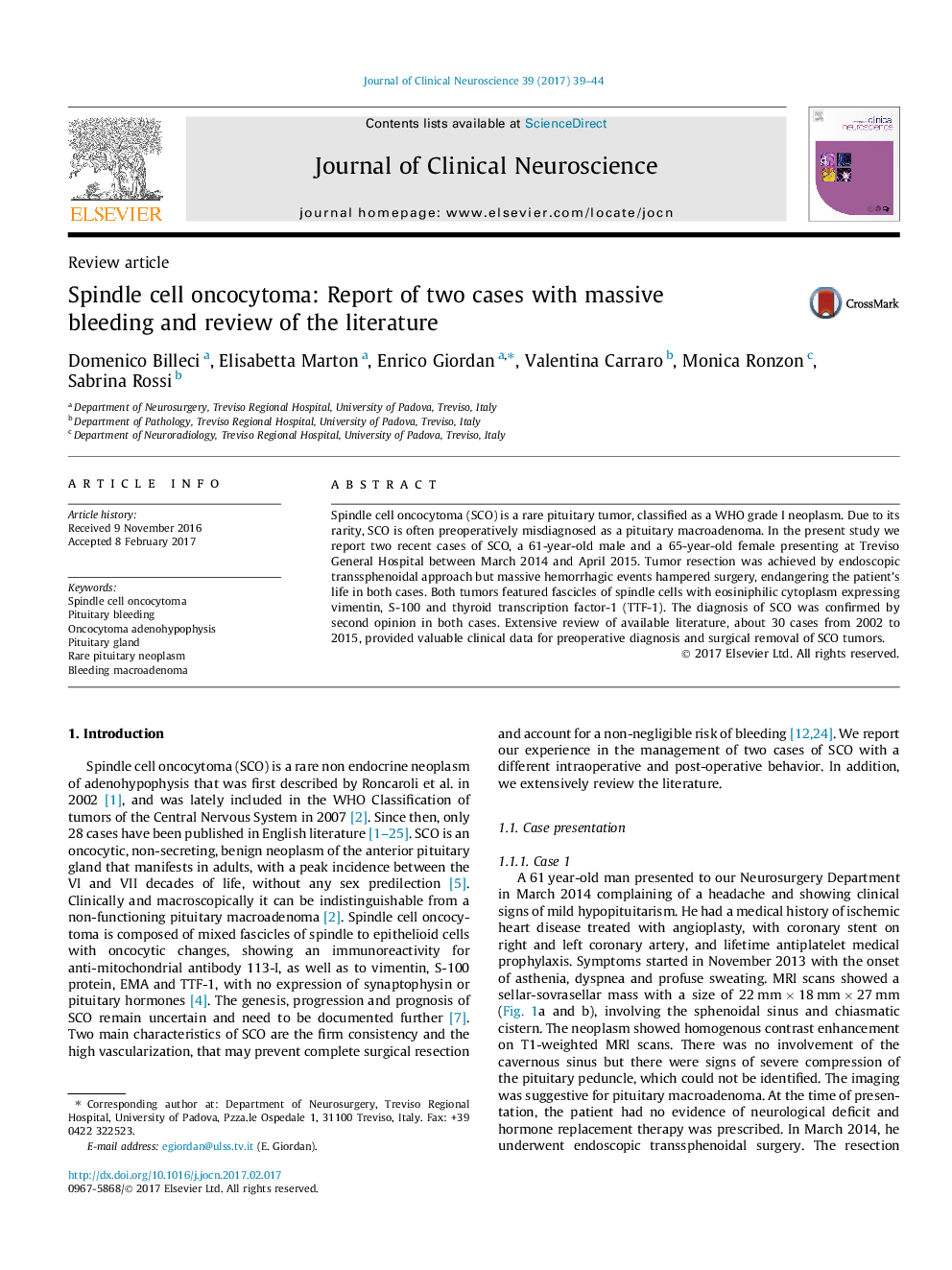| Article ID | Journal | Published Year | Pages | File Type |
|---|---|---|---|---|
| 5629924 | Journal of Clinical Neuroscience | 2017 | 6 Pages |
â¢Consider SCO in the differential diagnosis of non functioning sellar neoplasm, macroadenoma look-alike, with signs of high vascularization on imaging.â¢In case of recurrences, tumor residual or confirmed histopathological diagnosis MRA or angiography is warranted.â¢We suggest close follow up with MRI, given the high rate of recurrences.â¢In selected cases (inoperable/recurrent/high bleeding) we suggest radiotherapy or even arterial embolization of afferent vessels.
Spindle cell oncocytoma (SCO) is a rare pituitary tumor, classified as a WHO grade I neoplasm. Due to its rarity, SCO is often preoperatively misdiagnosed as a pituitary macroadenoma. In the present study we report two recent cases of SCO, a 61-year-old male and a 65-year-old female presenting at Treviso General Hospital between March 2014 and April 2015. Tumor resection was achieved by endoscopic transsphenoidal approach but massive hemorrhagic events hampered surgery, endangering the patient's life in both cases. Both tumors featured fascicles of spindle cells with eosiniphilic cytoplasm expressing vimentin, S-100 and thyroid transcription factor-1 (TTF-1). The diagnosis of SCO was confirmed by second opinion in both cases. Extensive review of available literature, about 30 cases from 2002 to 2015, provided valuable clinical data for preoperative diagnosis and surgical removal of SCO tumors.
